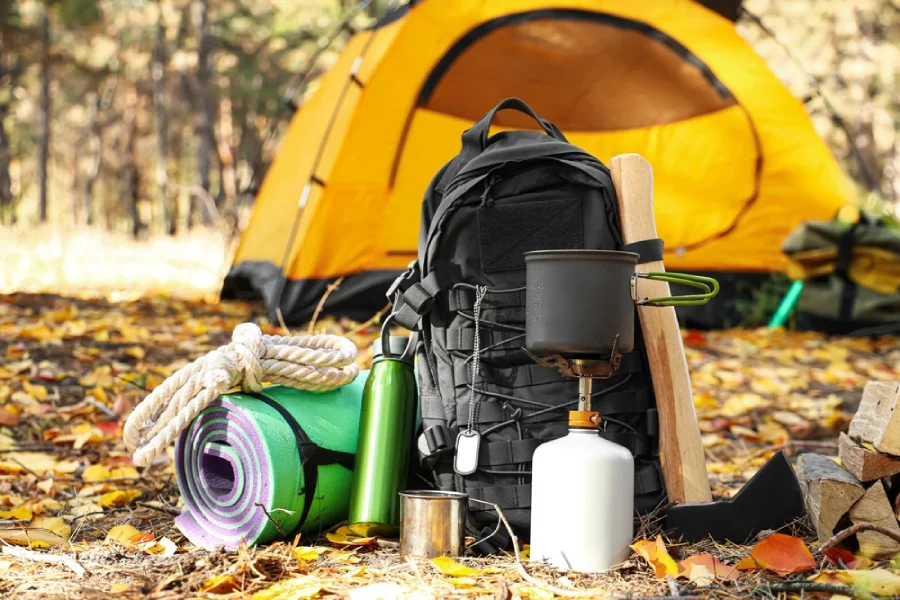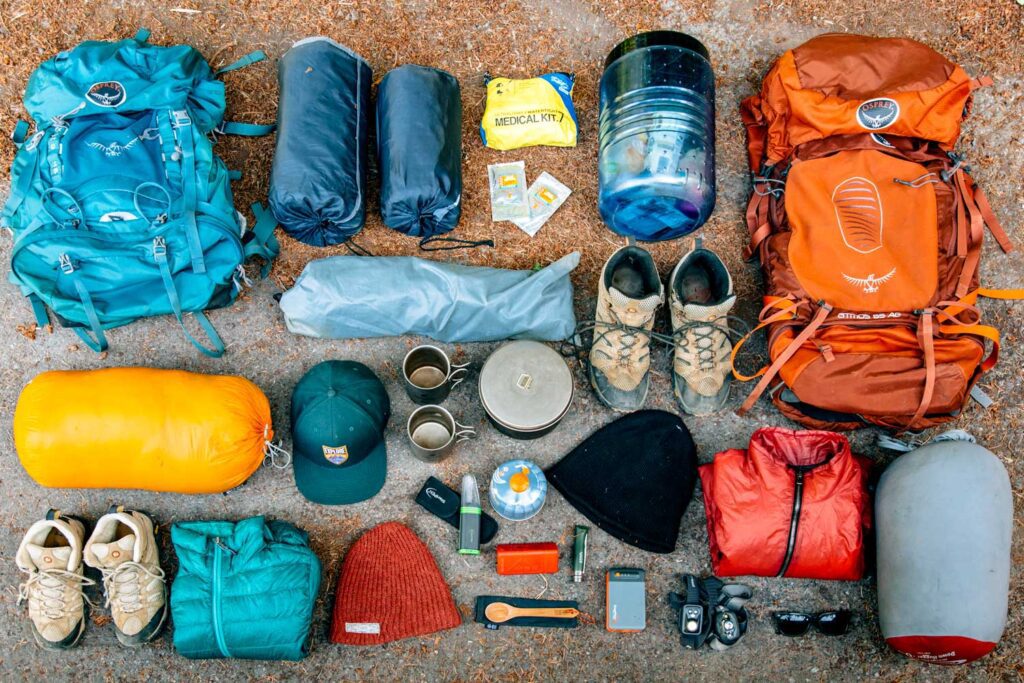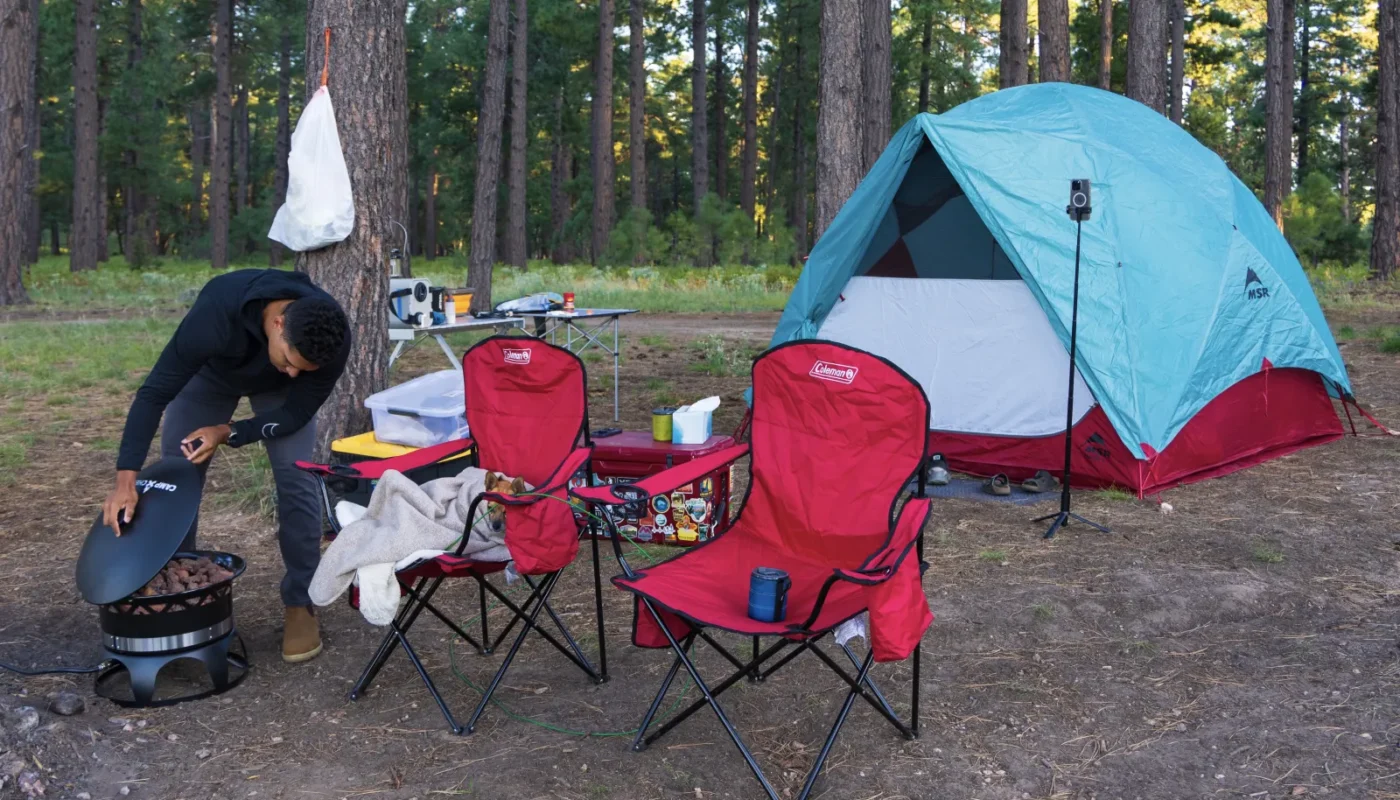If you’ve ever walked through an outdoor store, you’ve probably noticed there’s a lot of camping gear out there. From heavy-duty tents to ultra-light sleeping bags, it’s not always easy to tell what you actually need especially when you’re trying to travel light.
Whether you’re planning a weekend road trip or a backpacking adventure abroad, knowing the difference between regular and travel camping gear can help you pack smarter, save money, and stay comfortable on the go.
Let’s break it down.
Regular Camping Gear: Built for Comfort and Space

Regular camping gear is made for drive-up campsites, where you can bring your car right up to your spot. That means you don’t need to worry about weight or size you can focus on comfort.
Key features:
- Heavier and bulkier: Larger tents, thick sleeping pads, and full-size stoves are common.
- More comfort options: Think foldable chairs, air mattresses, and coolers.
- Durable materials: Heavier fabrics and strong poles that can handle rough weather.
- Ideal for: Family trips, car camping, or short weekend getaways.
| Pros: | Cons: |
| ✔️ More space and comfort | ❌ Not suitable for air travel or hiking |
| ✔️ Easier to set up and use | ❌ Takes up more storage space |
| ✔️ Great for groups or long stays | ❌ Can be expensive if you buy high-end gear |
Travel Camping Gear: Compact and Lightweight

Travel camping gear is designed for mobility. It’s all about keeping things light and efficient without sacrificing too much comfort.
Key features:
- Lightweight materials: Aluminum poles, thin fabrics, and compact sleeping bags.
- Easy to pack: Folds small and fits into backpacks or luggage.
- Multi-use designs: Gear that can serve more than one purpose (like a pot that doubles as a bowl).
- Ideal for: Backpackers, hikers, or travelers moving between destinations.
| Pros: | Cons: |
| ✔️ Easy to carry and pack | ❌ Less insulation and comfort |
| ✔️ Perfect for flights or long hikes | ❌ Smaller capacity |
| ✔️ Dries quickly and packs down small | ❌ Usually more expensive due to lightweight materials |
The Main Differences at a Glance
| Feature | Regular Camping Gear | Travel Camping Gear |
|---|---|---|
| Weight | Heavier and bulkier | Lightweight and compact |
| Comfort | More spacious and cozy | Minimal but efficient |
| Durability | Strong, rugged materials | Light but sometimes delicate |
| Ease of Transport | Best for car camping | Ideal for hiking or flights |
| Price Range | Varies widely | Often pricier for lightweight tech |
How to Choose What’s Right for You
It really comes down to how you camp.
- If you love weekend getaways, road trips, or family campgrounds go with regular camping gear.
- If you’re backpacking across countries, hiking to remote sites, or flying with your gear travel camping gear is the better choice.
You can also mix both. For example, use a lightweight tent from your travel setup and a comfortable sleeping pad from your regular gear.
Final Thoughts
The “right” camping gear isn’t about buying the most expensive or the lightest it’s about matching your gear to your adventure. Regular camping gear gives you comfort and space, while travel gear offers freedom and flexibility.
Once you understand the difference, you can build a setup that fits your style whether that’s a cozy campsite by the lake or a sunrise view from a mountain ridge.




